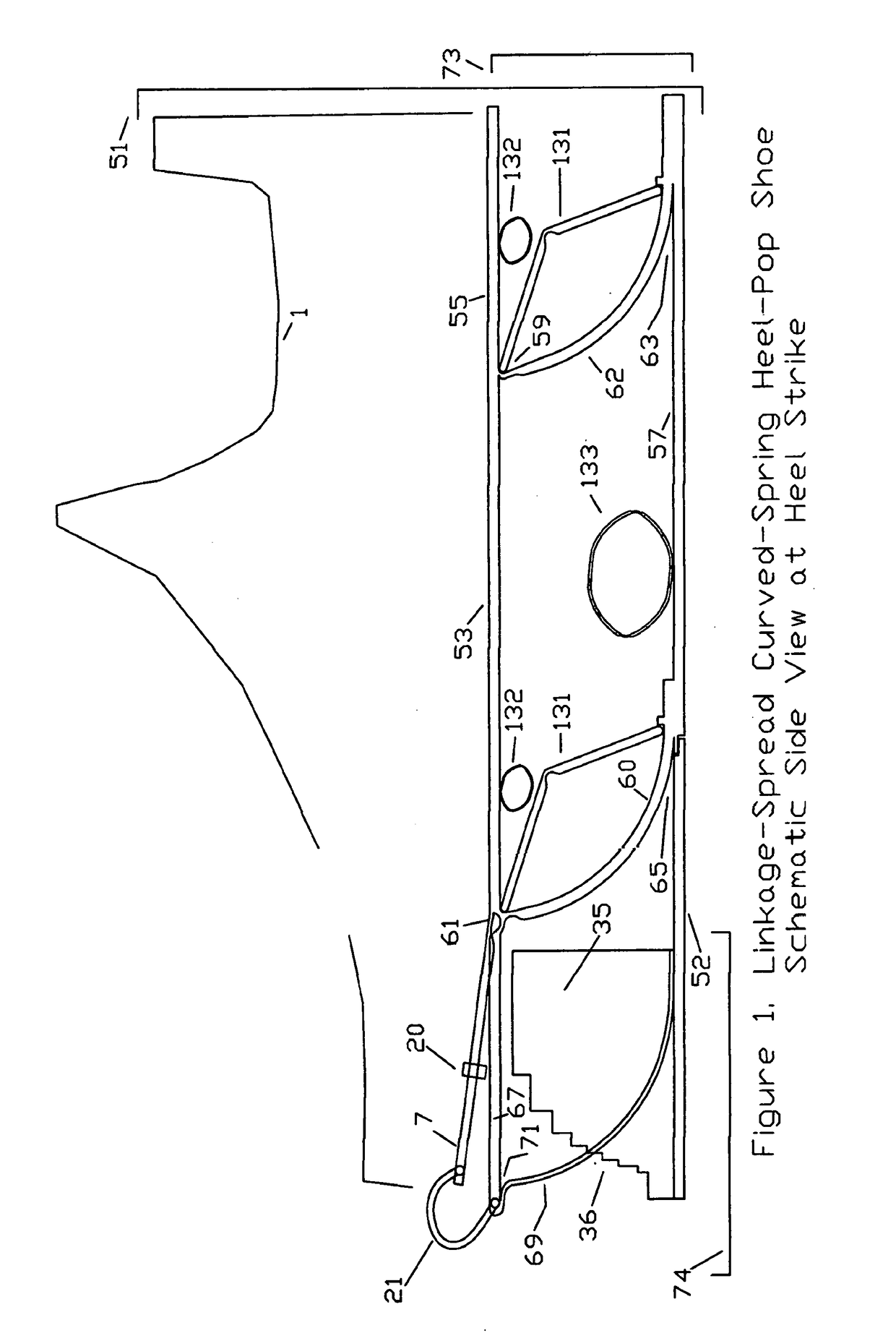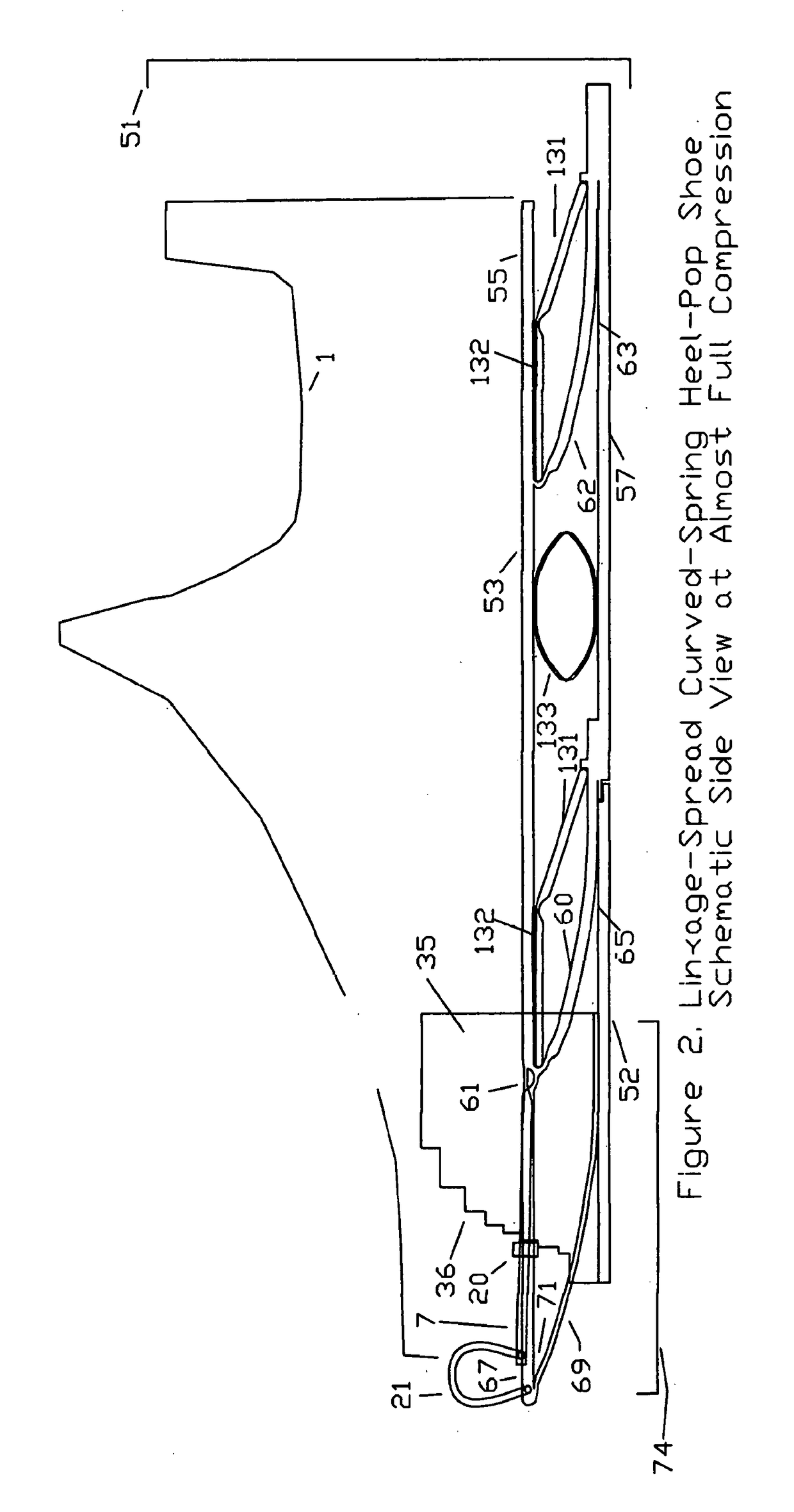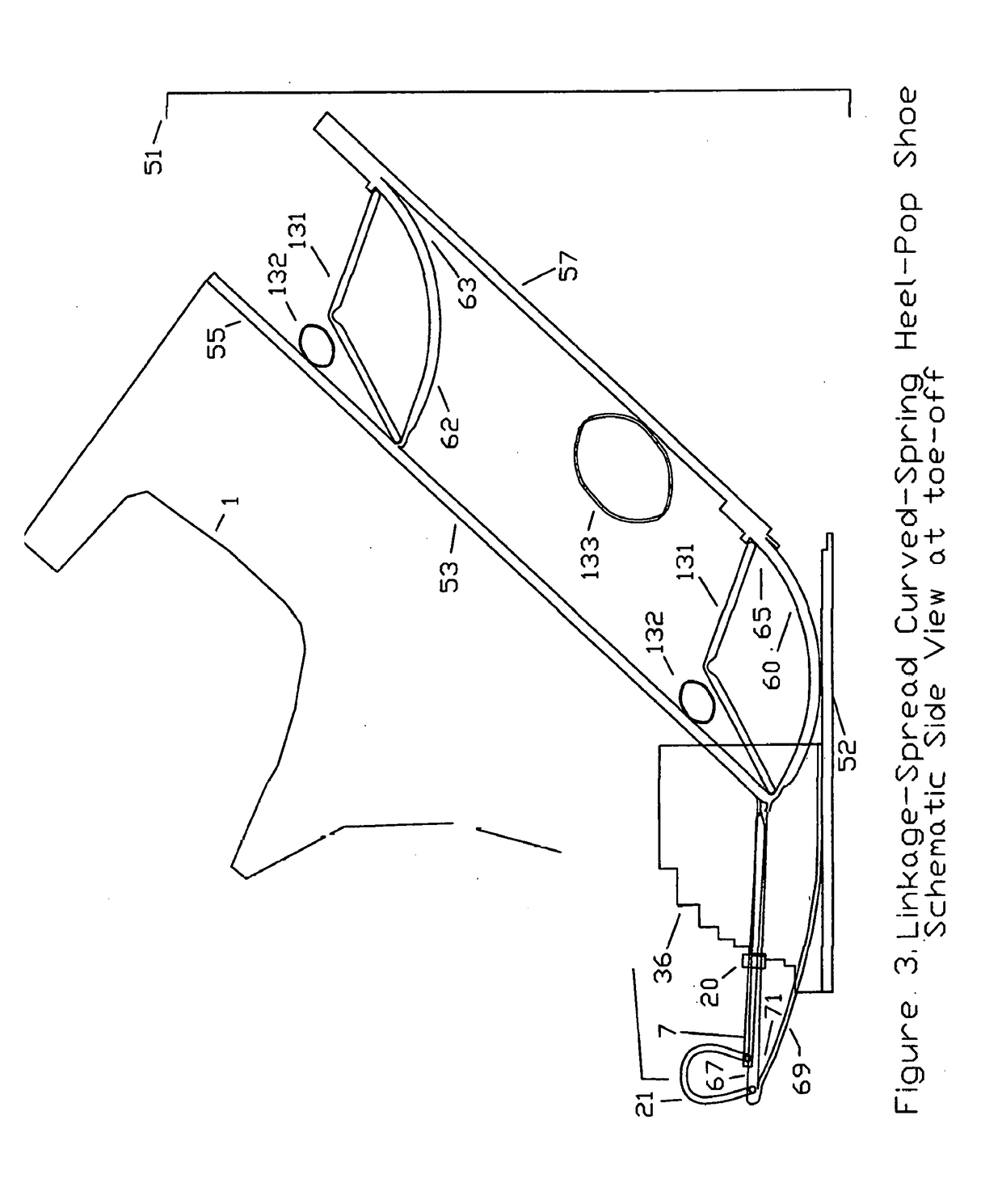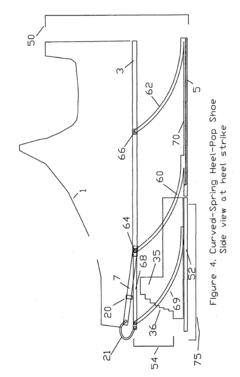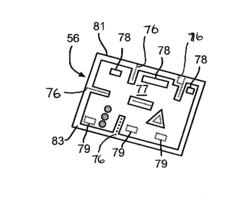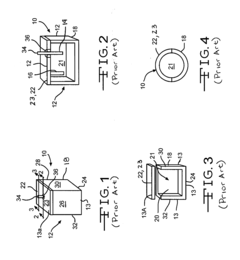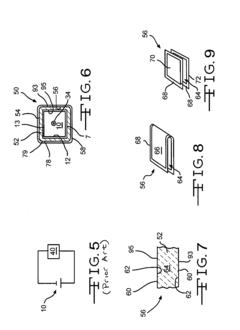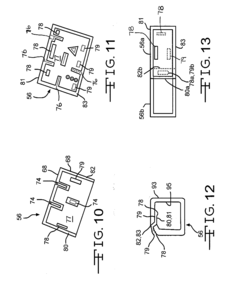Kevlar's Significant Role in Revolutionary Heat Shields
JUL 10, 20259 MIN READ
Generate Your Research Report Instantly with AI Agent
Patsnap Eureka helps you evaluate technical feasibility & market potential.
Kevlar Heat Shield Evolution
The evolution of Kevlar heat shields represents a significant milestone in aerospace technology, marking a transition from traditional materials to advanced composites. This progression can be traced through several key developmental stages, each characterized by notable technological advancements and innovative solutions.
In the early stages, heat shield technology primarily relied on ablative materials such as phenolic resins and carbon-based compounds. These materials were designed to burn away during re-entry, carrying heat away from the spacecraft. However, they had limitations in terms of reusability and weight efficiency.
The introduction of Kevlar into heat shield design in the 1970s marked a turning point. Initially, Kevlar was incorporated as a reinforcing material in composite structures, enhancing the strength and durability of existing heat shield designs. This phase saw the development of hybrid shields that combined Kevlar with traditional ablative materials, offering improved performance and reliability.
As research progressed, engineers began to explore the unique properties of Kevlar more extensively. The material's high strength-to-weight ratio and excellent heat resistance properties made it an ideal candidate for more advanced heat shield configurations. This led to the development of multi-layer heat shield designs, where Kevlar played a crucial role in providing structural integrity and thermal insulation.
The 1990s and early 2000s witnessed a surge in Kevlar-based heat shield innovations. Researchers focused on optimizing the material's performance under extreme re-entry conditions. This period saw the emergence of advanced manufacturing techniques, such as 3D weaving and resin infusion, which allowed for the creation of more complex and efficient Kevlar-based heat shield structures.
A significant breakthrough came with the development of flexible heat shield systems incorporating Kevlar. These designs allowed for deployable heat shields that could be compactly stored during launch and expanded prior to atmospheric re-entry. This innovation opened up new possibilities for spacecraft design and mission planning, particularly for missions involving larger payloads or unconventional re-entry profiles.
Recent years have seen a focus on enhancing the thermal properties of Kevlar-based heat shields through the integration of advanced coatings and nanoparticles. These developments aim to further improve heat dissipation and resistance to extreme temperatures, pushing the boundaries of what is possible in spacecraft thermal protection systems.
The ongoing evolution of Kevlar heat shields continues to drive innovation in space exploration and atmospheric re-entry technologies. As new challenges arise in space missions, including potential Mars landings and deep space exploration, the role of Kevlar in heat shield technology is expected to expand further, with researchers exploring novel applications and configurations to meet these future demands.
In the early stages, heat shield technology primarily relied on ablative materials such as phenolic resins and carbon-based compounds. These materials were designed to burn away during re-entry, carrying heat away from the spacecraft. However, they had limitations in terms of reusability and weight efficiency.
The introduction of Kevlar into heat shield design in the 1970s marked a turning point. Initially, Kevlar was incorporated as a reinforcing material in composite structures, enhancing the strength and durability of existing heat shield designs. This phase saw the development of hybrid shields that combined Kevlar with traditional ablative materials, offering improved performance and reliability.
As research progressed, engineers began to explore the unique properties of Kevlar more extensively. The material's high strength-to-weight ratio and excellent heat resistance properties made it an ideal candidate for more advanced heat shield configurations. This led to the development of multi-layer heat shield designs, where Kevlar played a crucial role in providing structural integrity and thermal insulation.
The 1990s and early 2000s witnessed a surge in Kevlar-based heat shield innovations. Researchers focused on optimizing the material's performance under extreme re-entry conditions. This period saw the emergence of advanced manufacturing techniques, such as 3D weaving and resin infusion, which allowed for the creation of more complex and efficient Kevlar-based heat shield structures.
A significant breakthrough came with the development of flexible heat shield systems incorporating Kevlar. These designs allowed for deployable heat shields that could be compactly stored during launch and expanded prior to atmospheric re-entry. This innovation opened up new possibilities for spacecraft design and mission planning, particularly for missions involving larger payloads or unconventional re-entry profiles.
Recent years have seen a focus on enhancing the thermal properties of Kevlar-based heat shields through the integration of advanced coatings and nanoparticles. These developments aim to further improve heat dissipation and resistance to extreme temperatures, pushing the boundaries of what is possible in spacecraft thermal protection systems.
The ongoing evolution of Kevlar heat shields continues to drive innovation in space exploration and atmospheric re-entry technologies. As new challenges arise in space missions, including potential Mars landings and deep space exploration, the role of Kevlar in heat shield technology is expected to expand further, with researchers exploring novel applications and configurations to meet these future demands.
Aerospace Thermal Protection Demand
The aerospace industry has witnessed a significant surge in demand for advanced thermal protection systems, particularly in the realm of heat shields. This demand is primarily driven by the increasing complexity and ambition of space exploration missions, as well as the growing commercial space sector. As spacecraft re-enter Earth's atmosphere or approach other celestial bodies, they encounter extreme temperatures that can exceed several thousand degrees Celsius. This intense heat, generated by friction with atmospheric particles, poses a critical challenge to the structural integrity and safety of space vehicles.
The need for robust thermal protection is not limited to re-entry scenarios. Launch vehicles, hypersonic aircraft, and even satellites in low Earth orbit require sophisticated heat management solutions to withstand the harsh thermal environments they encounter. The aerospace industry is constantly pushing the boundaries of what is possible, with missions to Mars, Venus, and beyond becoming more frequent. These ambitious endeavors necessitate heat shields capable of withstanding not only Earth's atmosphere but also the unique atmospheric conditions of other planets.
Commercial space companies have also contributed significantly to the increased demand for thermal protection systems. With the rise of reusable rocket technology and plans for space tourism, there is a growing need for durable, lightweight, and cost-effective heat shield materials that can withstand multiple re-entry cycles. This has spurred research into novel materials and manufacturing techniques that can meet these demanding requirements while remaining economically viable for frequent use.
The aerospace thermal protection market is also influenced by the development of hypersonic vehicles for both military and civilian applications. These vehicles, capable of traveling at speeds exceeding Mach 5, generate extreme heat due to air friction and compression. As a result, there is a pressing need for innovative thermal management solutions that can protect these vehicles and their payloads during sustained high-speed flight.
Furthermore, the increasing focus on sustainability and environmental concerns has led to a demand for heat shield materials that are not only effective but also environmentally friendly. This includes the development of recyclable or biodegradable materials, as well as those that minimize the release of harmful substances during atmospheric re-entry. The aerospace industry is actively seeking solutions that balance performance with ecological responsibility, driving innovation in green thermal protection technologies.
The need for robust thermal protection is not limited to re-entry scenarios. Launch vehicles, hypersonic aircraft, and even satellites in low Earth orbit require sophisticated heat management solutions to withstand the harsh thermal environments they encounter. The aerospace industry is constantly pushing the boundaries of what is possible, with missions to Mars, Venus, and beyond becoming more frequent. These ambitious endeavors necessitate heat shields capable of withstanding not only Earth's atmosphere but also the unique atmospheric conditions of other planets.
Commercial space companies have also contributed significantly to the increased demand for thermal protection systems. With the rise of reusable rocket technology and plans for space tourism, there is a growing need for durable, lightweight, and cost-effective heat shield materials that can withstand multiple re-entry cycles. This has spurred research into novel materials and manufacturing techniques that can meet these demanding requirements while remaining economically viable for frequent use.
The aerospace thermal protection market is also influenced by the development of hypersonic vehicles for both military and civilian applications. These vehicles, capable of traveling at speeds exceeding Mach 5, generate extreme heat due to air friction and compression. As a result, there is a pressing need for innovative thermal management solutions that can protect these vehicles and their payloads during sustained high-speed flight.
Furthermore, the increasing focus on sustainability and environmental concerns has led to a demand for heat shield materials that are not only effective but also environmentally friendly. This includes the development of recyclable or biodegradable materials, as well as those that minimize the release of harmful substances during atmospheric re-entry. The aerospace industry is actively seeking solutions that balance performance with ecological responsibility, driving innovation in green thermal protection technologies.
Kevlar Heat Shield Challenges
Despite the remarkable properties of Kevlar in heat shield applications, several significant challenges persist in its implementation and optimization. One of the primary obstacles is the material's susceptibility to degradation under extreme temperatures. While Kevlar exhibits excellent heat resistance compared to many conventional materials, prolonged exposure to the intense heat encountered during atmospheric re-entry can compromise its structural integrity.
Another challenge lies in the complex manufacturing process required to integrate Kevlar into heat shield systems effectively. The precise layering and bonding techniques necessary to create a robust, multi-functional heat shield demand advanced manufacturing capabilities and quality control measures. Ensuring consistent performance across large surface areas and maintaining uniform thermal protection properties throughout the shield's structure presents ongoing difficulties for engineers and material scientists.
The weight-to-performance ratio of Kevlar-based heat shields also poses a challenge, particularly in aerospace applications where every gram matters. While Kevlar offers significant weight savings compared to some traditional heat shield materials, there is a constant drive to further reduce mass without compromising thermal protection capabilities. This balancing act between weight reduction and performance enhancement requires continuous innovation in material composition and shield design.
Durability and reusability present additional hurdles in Kevlar heat shield development. The harsh conditions experienced during re-entry, including extreme temperature fluctuations and exposure to corrosive atmospheric elements, can lead to material fatigue and degradation over time. Enhancing the longevity of Kevlar-based heat shields while maintaining their protective properties is crucial for cost-effective and sustainable space exploration missions.
Furthermore, the integration of Kevlar with other materials to create composite heat shields introduces compatibility challenges. Ensuring proper adhesion between Kevlar and other components, such as ceramic tiles or carbon-based materials, while maintaining the desired thermal and mechanical properties of the overall structure, requires extensive research and testing. The development of effective bonding agents and interface materials that can withstand extreme conditions remains an ongoing area of investigation.
Lastly, the scalability of Kevlar-based heat shield production presents economic and logistical challenges. As space exploration ambitions grow and demand for advanced thermal protection systems increases, scaling up manufacturing processes while maintaining consistency and quality becomes increasingly complex. Addressing these production challenges is essential for the widespread adoption of Kevlar-based heat shields in various aerospace applications.
Another challenge lies in the complex manufacturing process required to integrate Kevlar into heat shield systems effectively. The precise layering and bonding techniques necessary to create a robust, multi-functional heat shield demand advanced manufacturing capabilities and quality control measures. Ensuring consistent performance across large surface areas and maintaining uniform thermal protection properties throughout the shield's structure presents ongoing difficulties for engineers and material scientists.
The weight-to-performance ratio of Kevlar-based heat shields also poses a challenge, particularly in aerospace applications where every gram matters. While Kevlar offers significant weight savings compared to some traditional heat shield materials, there is a constant drive to further reduce mass without compromising thermal protection capabilities. This balancing act between weight reduction and performance enhancement requires continuous innovation in material composition and shield design.
Durability and reusability present additional hurdles in Kevlar heat shield development. The harsh conditions experienced during re-entry, including extreme temperature fluctuations and exposure to corrosive atmospheric elements, can lead to material fatigue and degradation over time. Enhancing the longevity of Kevlar-based heat shields while maintaining their protective properties is crucial for cost-effective and sustainable space exploration missions.
Furthermore, the integration of Kevlar with other materials to create composite heat shields introduces compatibility challenges. Ensuring proper adhesion between Kevlar and other components, such as ceramic tiles or carbon-based materials, while maintaining the desired thermal and mechanical properties of the overall structure, requires extensive research and testing. The development of effective bonding agents and interface materials that can withstand extreme conditions remains an ongoing area of investigation.
Lastly, the scalability of Kevlar-based heat shield production presents economic and logistical challenges. As space exploration ambitions grow and demand for advanced thermal protection systems increases, scaling up manufacturing processes while maintaining consistency and quality becomes increasingly complex. Addressing these production challenges is essential for the widespread adoption of Kevlar-based heat shields in various aerospace applications.
Current Kevlar Heat Shield Solutions
01 Kevlar-based heat shielding composites
Composites incorporating Kevlar fibers are used for heat shielding applications. These composites often combine Kevlar with other materials to enhance thermal protection properties, creating lightweight and durable heat shields for various industries including aerospace and automotive.- Kevlar-based heat shielding composites: Composite materials incorporating Kevlar fibers are used for heat shielding applications. These composites often combine Kevlar with other materials to enhance thermal protection properties, creating lightweight and durable heat shields for various industries.
- Kevlar-reinforced thermal insulation: Kevlar fibers are utilized to reinforce thermal insulation materials, improving their strength and heat resistance. This application is particularly useful in aerospace, automotive, and industrial sectors where high-performance insulation is required.
- Kevlar-based fire-resistant fabrics: Fabrics incorporating Kevlar fibers are developed for fire-resistant and heat-protective clothing. These fabrics offer enhanced thermal protection while maintaining flexibility and comfort, making them suitable for firefighting gear and industrial safety apparel.
- Kevlar-enhanced ablative heat shields: Ablative heat shield materials incorporating Kevlar fibers are designed for extreme heat protection. These shields are used in spacecraft re-entry systems and other high-temperature applications, offering improved durability and thermal resistance.
- Kevlar-based heat-resistant coatings: Coatings containing Kevlar particles or fibers are developed to provide heat resistance and thermal insulation for various surfaces. These coatings can be applied to metals, composites, and other materials to enhance their heat shielding properties.
02 Multilayer heat shielding structures with Kevlar
Heat shielding systems utilizing multiple layers, including Kevlar, are developed to provide enhanced thermal protection. These structures may incorporate different materials in each layer to optimize heat resistance, flexibility, and overall performance in high-temperature environments.Expand Specific Solutions03 Kevlar-reinforced aerogels for thermal insulation
Aerogels reinforced with Kevlar fibers are developed as advanced thermal insulation materials. These lightweight, highly porous structures combine the strength of Kevlar with the excellent insulating properties of aerogels, resulting in improved heat shielding performance for various applications.Expand Specific Solutions04 Surface treatments for Kevlar in heat shielding applications
Various surface treatments and modifications are applied to Kevlar fibers to enhance their heat shielding properties. These treatments may include coatings, chemical modifications, or the incorporation of nanoparticles to improve thermal stability and fire resistance of Kevlar-based heat shields.Expand Specific Solutions05 Kevlar-based ablative heat shield materials
Ablative heat shield materials incorporating Kevlar fibers are developed for extreme temperature applications. These materials are designed to gradually decompose and char under intense heat, providing thermal protection through the absorption and dissipation of heat energy during the ablation process.Expand Specific Solutions
Key Players in Kevlar Heat Shields
The development of Kevlar-based heat shields represents an emerging field in advanced materials technology, with significant implications for aerospace and defense industries. The market is in its early growth stage, characterized by ongoing research and development efforts. While the market size is still relatively small, it shows promising potential for expansion due to increasing demand for high-performance thermal protection systems. Technologically, the field is rapidly evolving, with companies like The Boeing Co., Lockheed Martin Corp., and Northrop Grumman Systems Corp. leading innovation. These aerospace giants are leveraging their extensive R&D capabilities to advance Kevlar-based heat shield technology, potentially revolutionizing spacecraft and aircraft thermal protection systems.
The Boeing Co.
Technical Solution: Boeing has pioneered the use of Kevlar in heat shield applications for both aerospace and defense sectors. Their innovative approach combines Kevlar with ceramic materials to create a hybrid heat shield that offers superior thermal protection and structural integrity. Boeing's heat shield design incorporates a Kevlar-reinforced phenolic resin matrix, which is then infused with ceramic particles. This combination results in a lightweight yet highly effective thermal barrier. The company has reported a 30% weight reduction compared to traditional heat shield materials while maintaining equivalent thermal performance[2]. Boeing has successfully implemented this technology in their latest generation of spacecraft and hypersonic vehicle prototypes, demonstrating its effectiveness in protecting against extreme heat during atmospheric re-entry[4].
Strengths: Significant weight reduction, excellent thermal protection, and versatility in application. Weaknesses: Higher initial costs and potential challenges in scaling up production for larger vehicles.
Lockheed Martin Corp.
Technical Solution: Lockheed Martin has developed advanced heat shield technologies incorporating Kevlar for spacecraft and hypersonic vehicles. Their approach involves a multi-layer composite structure with Kevlar as a key component. The Kevlar layer provides exceptional strength-to-weight ratio and heat resistance. Lockheed Martin's heat shields utilize a proprietary resin system that bonds with Kevlar fibers, creating a robust thermal protection system. This system has demonstrated the ability to withstand temperatures exceeding 2000°C during re-entry simulations[1]. The company has also integrated Kevlar into ablative heat shield designs, where the material's unique properties contribute to controlled material degradation, effectively dissipating heat during atmospheric entry[3].
Strengths: Excellent thermal protection, lightweight design, and proven performance in extreme conditions. Weaknesses: High production costs and complexity in manufacturing large-scale heat shields.
Kevlar Heat Shield Innovations
Substantial energy return shoe with optimal low-impact springs, tuned gear change, and smart knee brace
PatentInactiveUS20180220738A1
Innovation
- The design incorporates enhanced heel-lift mechanisms with anti-toe-sink mechanisms and automatic gear changers, utilizing optimized low-impact springs and linkage systems to ensure full sole compression and efficient energy storage and release, reducing the maximum impact force and increasing energy return.
Fire suppressent battery pack
PatentInactiveUS20130288083A1
Innovation
- A fire suppressant system comprising a non-conductive fire suppressant liquid in a bladder that contacts the battery pack and a protective layer on the bladder's exterior, designed to minimize fire damage and contain debris, using materials that melt at elevated temperatures to deploy the liquid and apply minimal pressure.
Material Testing and Certification
Material testing and certification play a crucial role in ensuring the reliability and performance of Kevlar-based heat shields. The process involves rigorous evaluation of the material's properties under various conditions, simulating the extreme environments encountered during atmospheric re-entry.
Thermal testing is a primary focus, assessing Kevlar's ability to withstand high temperatures and thermal shock. This includes evaluating its thermal conductivity, specific heat capacity, and thermal expansion characteristics. Advanced thermal imaging techniques and calorimetry are employed to measure heat distribution and dissipation across the material.
Mechanical testing is equally important, examining Kevlar's strength, stiffness, and durability under extreme conditions. Tensile, compression, and shear tests are conducted at elevated temperatures to simulate re-entry scenarios. Impact resistance and fatigue testing are also performed to ensure the material can withstand the stresses of space travel and re-entry.
Chemical resistance testing is essential, as heat shields must maintain their integrity when exposed to various atmospheric gases and potential contaminants. This involves exposing Kevlar samples to different chemical environments and analyzing any changes in their physical or mechanical properties.
Ablation testing is a critical component of the certification process. It involves subjecting the Kevlar-based heat shield to high-energy plasma flows that simulate re-entry conditions. This test evaluates the material's ability to gradually erode and carry away heat, protecting the underlying structure.
Non-destructive testing techniques, such as ultrasonic inspection and X-ray tomography, are used to detect any internal defects or inconsistencies in the heat shield structure. These methods ensure the uniformity and integrity of the Kevlar layers within the composite material.
Environmental testing is conducted to assess the material's performance under various atmospheric conditions, including exposure to UV radiation, atomic oxygen, and space debris. This helps predict the long-term durability of the heat shield in the space environment.
Certification standards for Kevlar-based heat shields are stringent and often tailored to specific mission requirements. Organizations such as NASA and ESA have developed comprehensive testing protocols that materials must pass before being approved for use in space missions. These standards are continuously updated to reflect advancements in material science and space technology.
The certification process also includes extensive documentation and traceability requirements. Each batch of Kevlar used in heat shield production must be thoroughly documented, with its properties and performance characteristics recorded and verified. This ensures consistency and reliability across different production runs and missions.
Thermal testing is a primary focus, assessing Kevlar's ability to withstand high temperatures and thermal shock. This includes evaluating its thermal conductivity, specific heat capacity, and thermal expansion characteristics. Advanced thermal imaging techniques and calorimetry are employed to measure heat distribution and dissipation across the material.
Mechanical testing is equally important, examining Kevlar's strength, stiffness, and durability under extreme conditions. Tensile, compression, and shear tests are conducted at elevated temperatures to simulate re-entry scenarios. Impact resistance and fatigue testing are also performed to ensure the material can withstand the stresses of space travel and re-entry.
Chemical resistance testing is essential, as heat shields must maintain their integrity when exposed to various atmospheric gases and potential contaminants. This involves exposing Kevlar samples to different chemical environments and analyzing any changes in their physical or mechanical properties.
Ablation testing is a critical component of the certification process. It involves subjecting the Kevlar-based heat shield to high-energy plasma flows that simulate re-entry conditions. This test evaluates the material's ability to gradually erode and carry away heat, protecting the underlying structure.
Non-destructive testing techniques, such as ultrasonic inspection and X-ray tomography, are used to detect any internal defects or inconsistencies in the heat shield structure. These methods ensure the uniformity and integrity of the Kevlar layers within the composite material.
Environmental testing is conducted to assess the material's performance under various atmospheric conditions, including exposure to UV radiation, atomic oxygen, and space debris. This helps predict the long-term durability of the heat shield in the space environment.
Certification standards for Kevlar-based heat shields are stringent and often tailored to specific mission requirements. Organizations such as NASA and ESA have developed comprehensive testing protocols that materials must pass before being approved for use in space missions. These standards are continuously updated to reflect advancements in material science and space technology.
The certification process also includes extensive documentation and traceability requirements. Each batch of Kevlar used in heat shield production must be thoroughly documented, with its properties and performance characteristics recorded and verified. This ensures consistency and reliability across different production runs and missions.
Environmental Impact of Kevlar Heat Shields
The environmental impact of Kevlar heat shields is a crucial consideration in their development and application. These advanced heat shields, which incorporate Kevlar fibers, offer significant advantages in terms of thermal protection and weight reduction. However, their production, use, and disposal also present environmental challenges that must be carefully evaluated.
The manufacturing process of Kevlar-based heat shields involves energy-intensive procedures and the use of various chemicals. While Kevlar itself is a synthetic polymer derived from petroleum, its production requires less energy compared to some other high-performance materials. Nevertheless, the overall environmental footprint of heat shield production remains substantial, necessitating ongoing efforts to optimize manufacturing processes and reduce resource consumption.
One of the primary environmental benefits of Kevlar heat shields is their contribution to fuel efficiency in aerospace applications. By providing effective thermal protection at a lower weight than traditional materials, these heat shields enable spacecraft and aircraft to operate more efficiently, potentially reducing overall fuel consumption and associated emissions. This indirect positive impact on the environment should be considered when assessing the overall ecological footprint of Kevlar heat shields.
The durability and reusability of Kevlar-based heat shields also contribute to their environmental profile. These heat shields can withstand multiple reentry events, reducing the need for frequent replacements and minimizing waste generation. However, the eventual disposal of these heat shields presents challenges due to the composite nature of the materials used. While Kevlar itself is not biodegradable, research is ongoing to develop effective recycling methods for composite materials containing Kevlar fibers.
The potential release of microfibers during the use and degradation of Kevlar heat shields is an area of environmental concern. As with other synthetic materials, there is a risk of Kevlar fibers entering ecosystems, particularly aquatic environments. The long-term effects of these microfibers on marine life and food chains are not yet fully understood, highlighting the need for further research and potential mitigation strategies.
In terms of end-of-life management, the aerospace industry is exploring various approaches to address the environmental impact of decommissioned heat shields. These include advanced recycling technologies to recover and repurpose Kevlar fibers, as well as the development of more environmentally friendly disposal methods. The implementation of circular economy principles in the design and lifecycle management of heat shields is becoming increasingly important to minimize their overall environmental impact.
The manufacturing process of Kevlar-based heat shields involves energy-intensive procedures and the use of various chemicals. While Kevlar itself is a synthetic polymer derived from petroleum, its production requires less energy compared to some other high-performance materials. Nevertheless, the overall environmental footprint of heat shield production remains substantial, necessitating ongoing efforts to optimize manufacturing processes and reduce resource consumption.
One of the primary environmental benefits of Kevlar heat shields is their contribution to fuel efficiency in aerospace applications. By providing effective thermal protection at a lower weight than traditional materials, these heat shields enable spacecraft and aircraft to operate more efficiently, potentially reducing overall fuel consumption and associated emissions. This indirect positive impact on the environment should be considered when assessing the overall ecological footprint of Kevlar heat shields.
The durability and reusability of Kevlar-based heat shields also contribute to their environmental profile. These heat shields can withstand multiple reentry events, reducing the need for frequent replacements and minimizing waste generation. However, the eventual disposal of these heat shields presents challenges due to the composite nature of the materials used. While Kevlar itself is not biodegradable, research is ongoing to develop effective recycling methods for composite materials containing Kevlar fibers.
The potential release of microfibers during the use and degradation of Kevlar heat shields is an area of environmental concern. As with other synthetic materials, there is a risk of Kevlar fibers entering ecosystems, particularly aquatic environments. The long-term effects of these microfibers on marine life and food chains are not yet fully understood, highlighting the need for further research and potential mitigation strategies.
In terms of end-of-life management, the aerospace industry is exploring various approaches to address the environmental impact of decommissioned heat shields. These include advanced recycling technologies to recover and repurpose Kevlar fibers, as well as the development of more environmentally friendly disposal methods. The implementation of circular economy principles in the design and lifecycle management of heat shields is becoming increasingly important to minimize their overall environmental impact.
Unlock deeper insights with Patsnap Eureka Quick Research — get a full tech report to explore trends and direct your research. Try now!
Generate Your Research Report Instantly with AI Agent
Supercharge your innovation with Patsnap Eureka AI Agent Platform!
